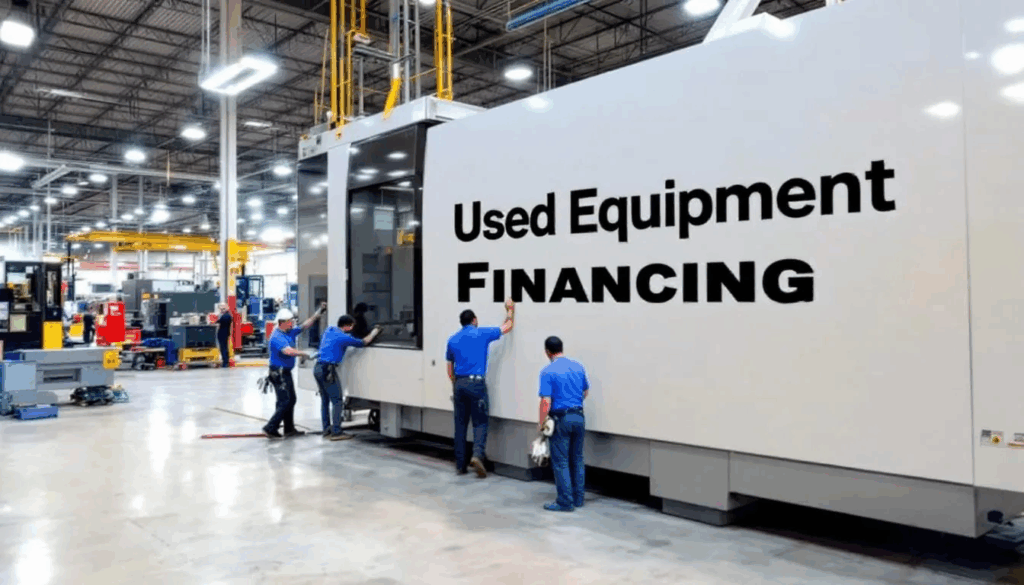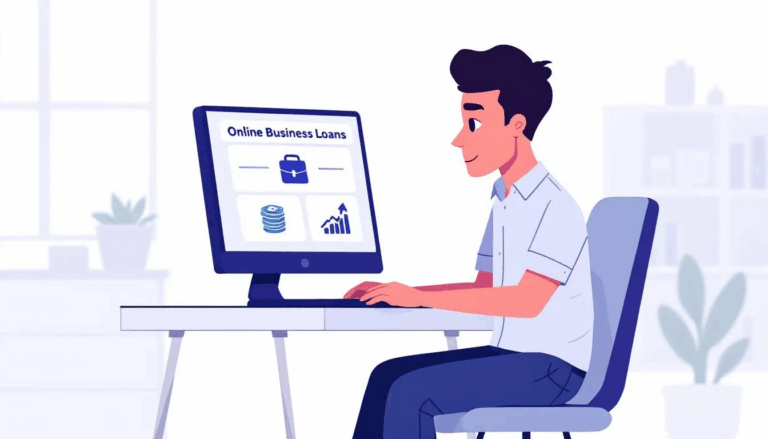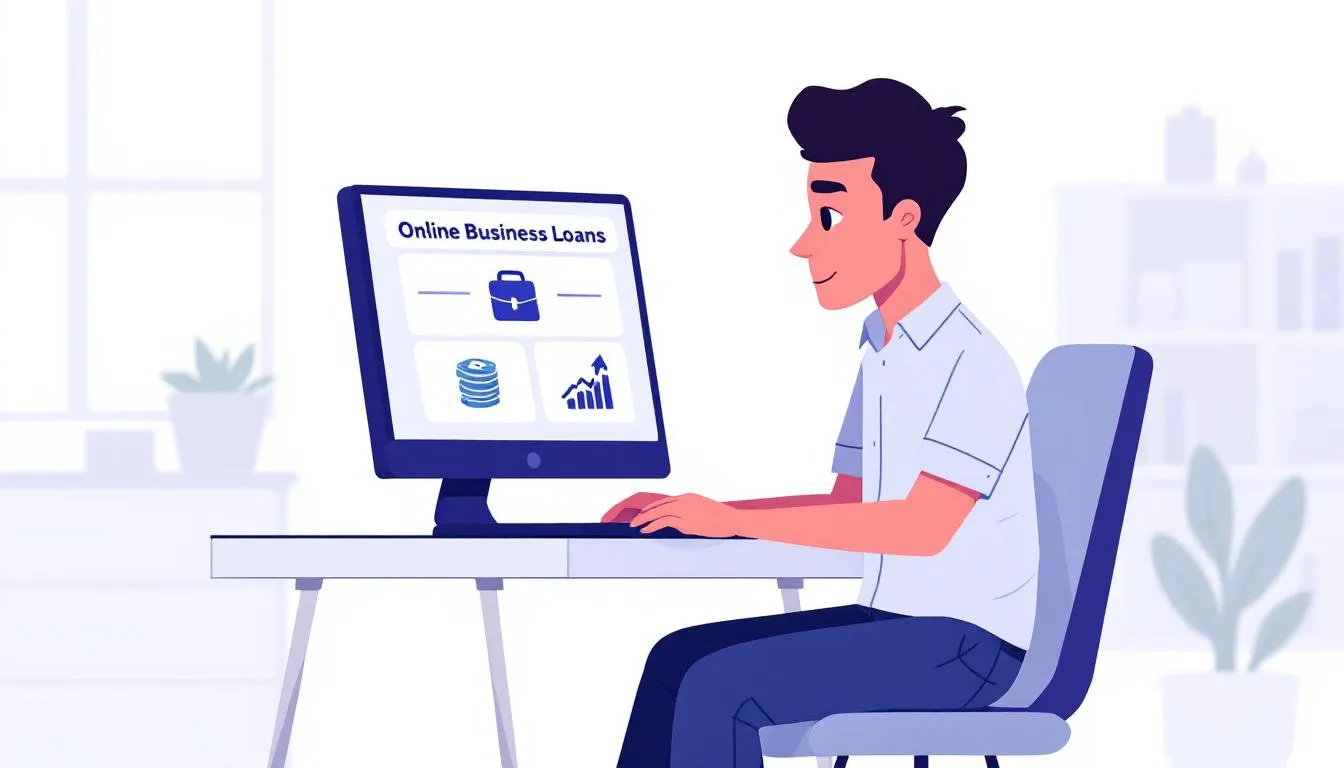What is Used Equipment Financing?
Equipment financing is when you use a small business loan or leasing to acquire equipment for your company. Small business loans are available for both new and pre-owned equipment, depending on your specific business needs. Keep in mind that while funding for new equipment may be more accessible, used equipment can help you save money.
Let’s look at the most common form of equipment financing.
Equipment Loans
With an equipment loan, the asset is the collateral. Usually, you won’t have to put up additional collateral or a personal guarantee, so your personal and other business assets are protected.
Using the equipment as collateral for the lender means lower risk, leading to higher borrowing amounts with lower interest rates and better terms.
Qualified borrowers could get the following:
-
Up to $5 million per piece of equipment.
-
Interest rates starting at 3.5%
-
Repayment terms of 1-6 years.
-
Funding in 3-10 business days.
Other Small Business Loans
An equipment loan is just one type of small business loan you can use to acquire existing equipment. Leasing is also an option. Leasing used equipment is similar to a loan, except you don’t own the equipment outright. Equipment leasing often features different payment options.
At the end of the leasing term, you’ll have the option to lease different equipment, or some lenders will let you purchase the asset at fair market value. Consider the quality and longevity of the equipment when deciding between loan and lease options for older equipment.
You can also use the following small business loans for used equipment purchases or other business financing needs:
If you want to learn more about these small business loans, our loan experts can answer any questions you might have.
How do Used Equipment Loans work?
Equipment loans are similar to other types of loans, where you borrow money to purchase the equipment and repay the loan, along with interest, in fixed monthly payments. The difference is that the invoice amount for the equipment determines the loan amount. Some equipment financing options also allow for flexible terms and payment plans.
Many lenders prioritize the condition of the equipment when determining financing terms. Large down payments can help lower future financing payments. Most used equipment financing deals under $250,000 do not require extensive paperwork.
After approval, you’ll sign the financing agreement. The lender issues the money directly to the equipment merchant or seller. The lender holds a lien on the title. Once you pay off the loan and own the equipment outright, you get the title in the business’s name.
Traditional banks, alternative online lenders, and marketplaces (like United Capital Source) offer used equipment financing. When considering lenders, look for a market leader for your given industry. Many equipment financing options provide fixed rates.
Equipment financing often covers the full purchase price of used equipment, saving you from having to pay cash. However, some lenders may require a down payment, depending on your credit and the condition of the equipment.
What are the qualifications to get a Used Equipment Loan?
Equipment loan qualifications vary from lender to lender. When you apply for an equipment loan through United Capital Source, the qualifications are:
-
A minimum credit score of 600.
-
At least 1 year in business.
-
Annual revenue of $250,000 or more.
How to apply for Used Equipment Financing:
Follow these steps to apply with United Capital Source.
Step 1: Make sure buying equipment is right for your business.
You want to make sure the equipment is worth the cost of the loan. The lender will review the equipment to determine if its lifetime value justifies the invoice cost. When looking for pre-owned equipment, you want to ensure it will last for at least the loan term and hopefully well beyond that.
Step 2: Gather your documentation.
You need to provide the following:
-
Driver’s license.
-
The invoice for the equipment.
-
Voided check from your business checking account.
-
Bank statements from the past three months to demonstrate cash flow.
-
Financial statements.
-
Tax returns (not always required).
Step 3: Complete the application.
The application process is relatively fast, and you can apply directly through our one-page business loan application in a matter of minutes or reach out to one of our loan experts to guide you through the process.
Step 4: Speak to a representative.
After we receive your application, a senior account executive will contact you to discuss your needs and explore your equipment loan options. We offer complete transparency, with no hidden fees or surprises.
You’ll get a complete breakdown of loan amounts, terms, and fees. Once you have all the necessary information, you can determine which loan options are the most suitable for your company.
Step 5: Get approved.
Your loan goes through when your application meets underwriting requirements and gets credit approval. Next, the funds are transferred directly to the seller to cover the invoice. We can help you set up automatic payments, or you can arrange to pay by check or electronic payment.
What are the benefits of Used Equipment Financing?
The primary benefit of used equipment financing is that it provides the necessary funding for equipment purchases that benefit your business. Business equipment can be expensive, and even used equipment often comes with a large purchase price. The equipment financing process enables businesses to acquire what they need while preserving their working capital for optimal cash flow.
A quick online application process is typical for used equipment financing. Approval for used equipment financing can often be obtained quickly, sometimes within a few hours.
Purchasing used equipment can often be written off as a business expense for tax benefits. The equipment serves as collateral for the loan, which can aid in approval and help secure competitive interest rates.
What are the drawbacks of Used Equipment Financing?
While financing used equipment has many advantages, it also has disadvantages to consider. The most significant drawback is the financing cost, including interest and related fees.
Another significant risk is that the equipment could become obsolete or depreciate before the loan is repaid. This risk is present in all equipment financing options and is elevated for used equipment.
Obtaining financing for used equipment can involve a more thorough appraisal process than financing new equipment. Some lenders may require a down payment to offset the increased risk of financing used equipment.
Used Equipment Financing Pros & Cons
Pros:
-
Provides funding for the specific equipment you need.
-
The equipment is the collateral for the loan.
-
Helps preserve working capital.
-
Quick & easy online applications.
-
Might provide tax advantages.
-
Competitive rates.
Cons:
-
Increased costs due to interest and fees.
-
The risk that the used equipment becomes obsolete.
-
A more thorough appraisal process might be required.
-
Some lenders may require a down payment.
Frequently Asked Questions
Here are the most frequently asked questions we receive about equipment loans.
What kinds of Used Equipment can I finance?
Small businesses can use loans to purchase a wide range of equipment across various industries. Depending on your industry, you can shop for pre-owned equipment at auctions, or equipment sellers might also carry used equipment.
Some types of equipment you can acquire with a loan include:
-
Computers, printers, and computer accessories.
-
Copiers.
-
Desks and other office furniture.
-
Construction (heavy) equipment such as tractors, bulldozers, etc.
-
Dog grooming equipment.
-
Restaurant equipment, including industrial ovens, freezers, and refrigerators.
You can further discuss what types of equipment are available with one of our loan experts.
Is it better to Buy New or Used Equipment?
There are advantages and disadvantages to both new and pre-owned equipment. The benefit of new equipment financing is that it enables you to acquire the latest machines and technology.
The most apparent benefit of pre-owned equipment is that it’s way cheaper in most cases. New equipment takes an immediate depreciation hit after being installed. In addition, used equipment tends to depreciate more slowly. Since you’re typically borrowing more money for new equipment, you will pay more interest throughout the loan.
The disadvantage of used equipment is that finding financing can be more challenging. Some equipment financing companies won’t even consider loans for pre-owned equipment. Other lenders and lending marketplaces might have restrictions on what you can purchase. For example, most companies won’t finance equipment older than 10 years. Financing options for used equipment could require either a down payment or additional collateral.
The decision often depends on current market conditions and your specific financial situation. Conduct due diligence and carefully consider the purchase prices and loan terms before making a decision.
Can I Finance Used Equipment with bad credit?
Since equipment loans include the asset as collateral, lenders are typically more willing to work with borrowers with bad credit. While you may be able to get bad credit business loans, borrowing with bad credit could mean higher rates and fees to offset the increased risk for lenders.
Used Equipment Financing – Final Thoughts
Small business owners often turn to equipment financing and small business loans to obtain the necessary resources to maintain and grow their businesses. You can use equipment loans to purchase a wide range of items, from office furniture to heavy machinery.
When pursuing equipment financing, consider what is best for your business. Things to consider: whether or not it’s the right equipment to get the job done, whether your cash flow can handle the monthly payment, and what are the best interest rates and loan terms you can get.
When purchasing new or used equipment, consider what makes the most sense for your business. Previously owned equipment can help you save money. However, many lenders consider used equipment to be a greater risk. They look at the resale value if they need to repossess the equipment. As a result, they’ll typically offer shorter repayment terms and possibly even higher interest rates. It could also mean higher credit score requirements or putting up additional collateral.
To make sure you’re getting the best deal, you want to work with a financing partner who knows your industry and your business needs and can help you find the best possible used equipment financing program.
At United Capital Source, our account executives and loan experts are well-versed in the intricacies of used equipment financing. They can help you find the best loan offer for your business and financial goals. Apply for equipment financing today or call us to learn how a used equipment loan can benefit you.













